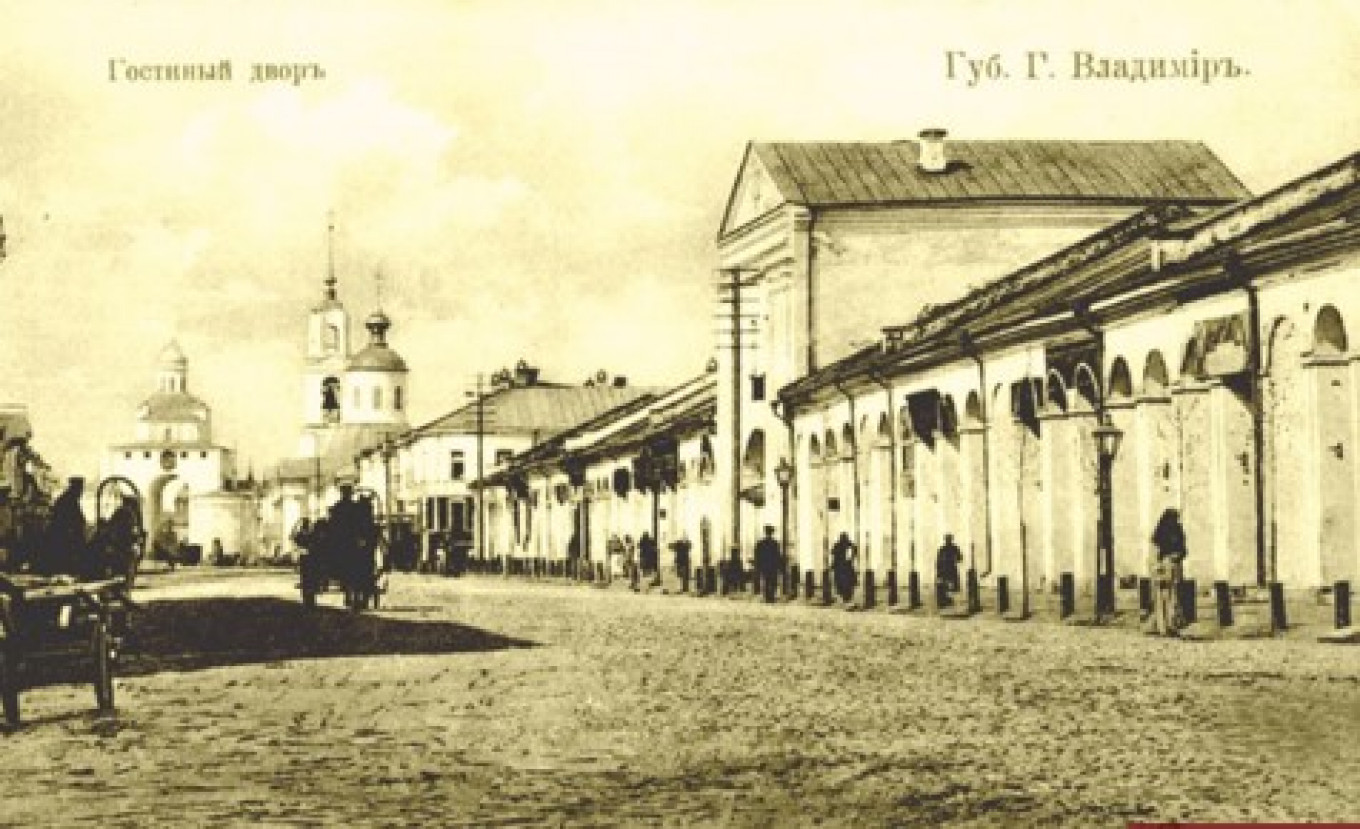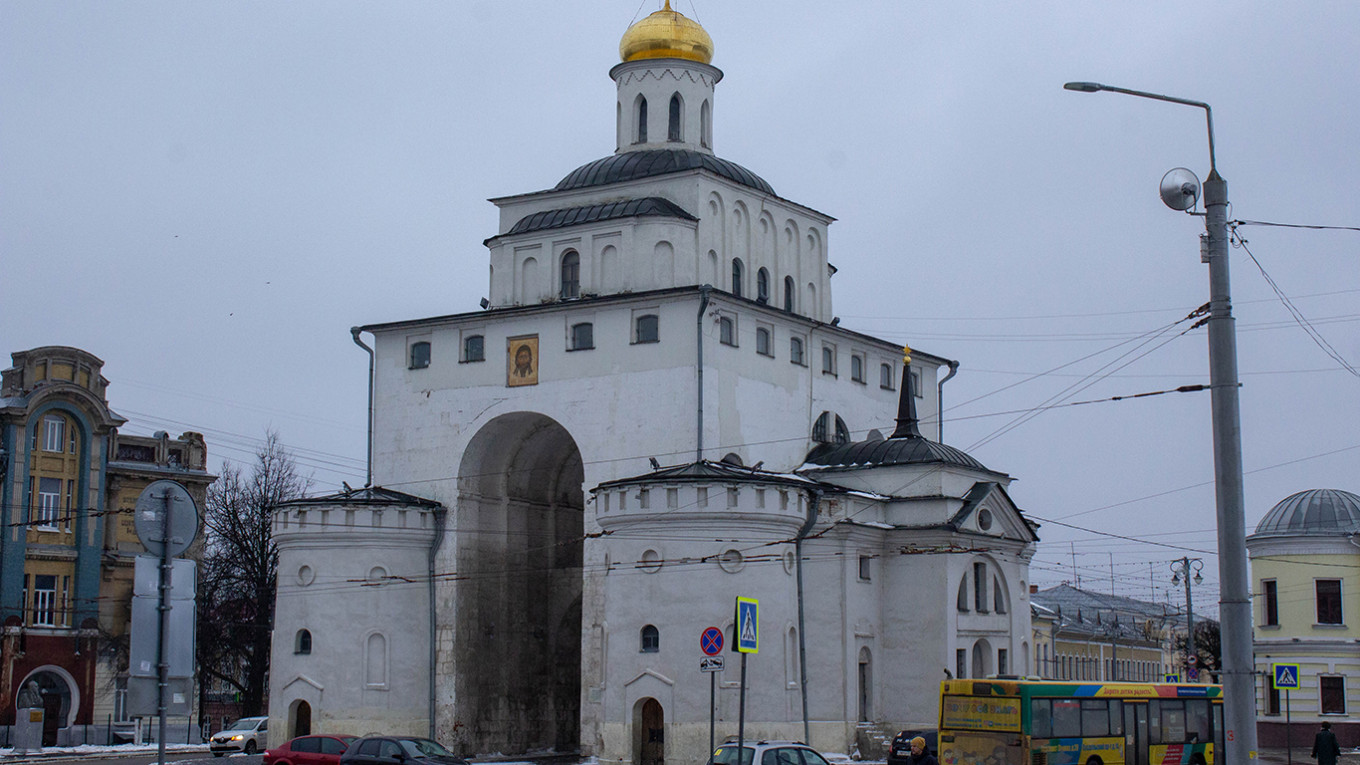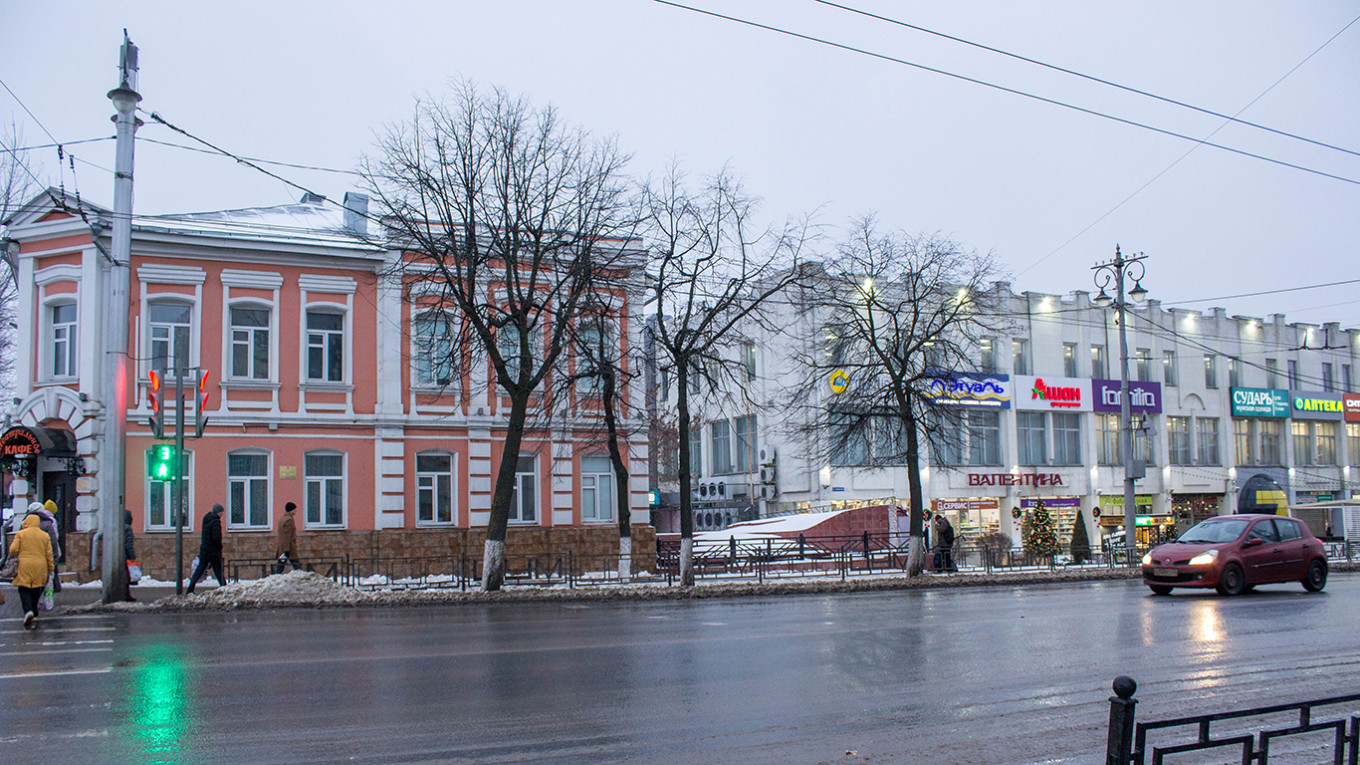As the sun filters through thick winter clouds over Vladimir, a city located 200 kilometers to the east of Moscow, the residents go about their business as tourists wander through the center of the city, taking photographs of the Golden Gates, stepping into the pedestrian Georgievskaya Ulitsa to drink some Suzdal mead and buy souvenirs before rushing off to Cathedral Square to admire the churches and visit the museums. Somehow day-to-day life and commerce coexist with the preservation of the ancient architecture. But it’s not an easy balancing act.

Preserving ancient architecture
Vladimir is one the oldest cities in Russia, founded in 1108 and once the capital of the Vladimir-Suzdal Principality. It is one of the main cities of the tourist route of the Golden Ring with hundreds of historical and cultural monuments, three of which are on the UNESCO World Heritage List: Assumption Cathedral, the Golden Gate and St. Dmitry Cathedral. Its rich history, many preserved historical and cultural sites and proximity to the capital make Vladimir popular with foreign and Russian tourists.
Vladimir is unique in another way, too. In the early 1970s, the Giprogor State Institute of Urban Planning and Gosstroi developed a general plan for Vladimir. According to the first draft project, the historical buildings in the city center would be torn down to make way for the simple 5-story apartment buildings built all over the country. At the time, only a few people understood the value of the cultural heritage. But Russian preservationist and architect Igor Stoletov did understand, and he fought to save the city’s cultural legacy. Vladimir became the first city in the U.S.S.R. with a state plan for the preservation and reconstruction of the historical center.
The project was designed until 2005. It was based on research by the historian Lidia Dudorova, who found information about the history of virtually all the buildings along with drawings of the streets and houses. She was able to provide historical references for each building in the project. On the basis of this information, the team decided which buildings must be saved and which had little historical value.
There is another unique aspect of urban development in Vladimir. As Yuri Borisov, a member of the Vladimir Public Chamber told The Moscow Times, in other cities investors or property owners often decide to tear down old structures and build replicas instead of carrying out the far more expensive and time-consuming reconstruction. The city government in Vladimir chose a more difficult path. Borisov said that in Vladimir, even banks and shops conduct their business in buildings that date back centuries.
Tough building codes

Despite the protective legislation, historical buildings are surrounded by power lines and signs, and they are viewed against the backdrop of cars, buses, and new architecture from various eras in the distance. Their functions have also changed. For example, after the building of the former City Council (54 Bolshaya Moskovskaya Ulitsa) was carefully reconstructed, since 2008 it has been Friendship House, the venue for guests from other regions and countries. Although the 18th century Gostiny Dvor — an ancient trading arcade and caravansary — is still a bustling shopping center, it is no longer organized in rows of vendors selling one type of goods. Instead the spaces are occupied by nationwide or international clothing brands and electronic shops.
But all the same, the architecture has been saved. The 2010 update of the project developed in 1979 by Stoletov prohibits changing the historical structure of the streets and building modern houses.
Reconstruction of historical buildings is a very expensive and tedious process. Builders are only allowed to use materials that were characteristic of Vladimir in previous centuries. That means there is a ban on tile, siding, plastic, silicate brick without plaster, and any other modern construction material. There is also a very limited number of colors that may be used. During the reconstruction, it is important to preserve as much of the original architectural detail and as many fragments of the interiors and exteriors as possible. Even advertising signs must be approved by the State Inspectorate for the Protection of Cultural Heritage.
The municipal program for the protection of monuments extends until 2023. It includes the development of draft protection zones for nine more city structures, including a 19th century house on Dvoryanskaya Ulitsa.

Zoning codes and reality
As is often the case, regulations are good on paper, but reality is much different.
Olga Butrim is an architect at Tsimailo Lyashenko & Partners (Moscow), co-founder of an architectural firm in Vladimir, and a graduate of the first group to study in the federal program Arkhitektory.rf. “Vladimir has great potential, but it also has a lot of problems,” she told The Moscow Times. “One of them is the parody of new buildings pretending to be old. I see wooden houses rotting away, or authorities pulling them down and putting up plastic fakes that are meant to look like old structures… Sometimes building height restrictions don’t work and huge boxy buildings appear in the city. We are losing our panoramic views.”
Another problem, in her opinion, is connected with a shortage of highly qualified specialists. Alexei Dudin, a journalist on local TV, also blames problems on locals. But he means the people who are supposed to be protecting cultural heritage sites.
“In 2016, a construction company built two floors higher than indicated in the project disclosure statement and building permission. Why was the violation discovered when construction was finished?” he asked. “The structure wasn’t built in a day or two.”
“There was the same situation with the installation “I love Vladimir” that was in front of the Assumption Cathedral in 2018. Tourists liked it, and you could find a lot of photos with it on Instagram. But many months after it appeared, the authorities decided that it spoiled the view of the cathedral. As a result, it was removed. I think it was a strange decision because the installation was very popular and it not very big. Most mostly I don’t understand why the problem, if there was one, was only identified months later,” he said.
Dudin wants approvals for construction to be made with construction companies, the mayor’s office, museum officials, and the local clergy. Only when all these interest groups take part can preservation of ancient sites can be balanced with urban development.

A new paradigm
Alexei Dudin blames much of the city’s problems on the people in power. Yuri Borisov — one of those people in power — doesn’t agree. He thinks Vladimir’s problems are not unique but typical of all Russian cities.
“In the U.S.S.R., many historical landmarks were lost. Unfortunately, Vladimir is not an exception. For example, although the Russian writer Alexander Herzen married his bride Natalya Zakharyina in the Kazan Church in Yamskaya Sloboda, it was pulled down in 1966. [Today this is Victory Square, where in 2008 modern version of the Kazan Church was built.] At the same time, the historical center of Vladimir is our architectural heritage. Sometimes it is difficult for authorities and society to agree on certain questions, but as a rule, the outcome of these discussions is in favor of the city,” not the builders.
Olga Butrim has another proposal. She finds the existing regulations to be very narrow and restrictive. She suggests that Vladimir adopt the kind of regulations being used in many cities, including Kaliningrad and Saratov. They define the spatial guidelines for neighborhoods. This is not solely conservation or mimicking the past, but preserving structures of value and defining what new structures may be built to harmonize with the old. This is the general approach in many European cities where there is redevelopment but the new and old are blended harmoniously.
“We need to use traditional details, the rhythm and proportions of old structures, the maximum length of facades and building heights in order to build modern houses using contemporary materials and technology,” Butrim said. “That’s the way to get harmonious construction. Our task is to preserve the balance between the past and the present.”

Leave a Reply